 "Jake Stumph Racing" (jakestumphracing)
"Jake Stumph Racing" (jakestumphracing)
05/28/2015 at 11:45 ē Filed to: jakestumphracing, BMW, jalopnik, oppositelock, oppo, trackday, modification, 135i
 1
1
 8
8
 "Jake Stumph Racing" (jakestumphracing)
"Jake Stumph Racing" (jakestumphracing)
05/28/2015 at 11:45 ē Filed to: jakestumphracing, BMW, jalopnik, oppositelock, oppo, trackday, modification, 135i |  1 1
|  8 8 |
Originally written and posted on November 27th, 2014 at:
!!! UNKNOWN CONTENT TYPE !!!
With the development of the E90 and E82 chassis, many concessions were made, sacrificing performance for comfort, or in some cases, cheap solutions. Despite being fitted with what BMW coined the ďM-SportĒ suspension, the 135i has been universally panned by enthusiasts for being critically under-damped, vague in feeling, and generally underwhelming. Dampers, spring rates, and open differential withstanding, the chassis bushings are extremely soft. Hearsay has dictated that this was an intentional choice by BMW to offset the extremely stiff ride afforded by the run-flat tires that are equipped to the car from the factory. The byproduct of this is a lot of chassis movement, leading to unpredictable handling due to the suspension not being able to function as effectively as it otherwise would be able to on a solidly mounted chassis (how new ///M cars are set up from the get-go).
Stock 135i rear subframe attachment point:
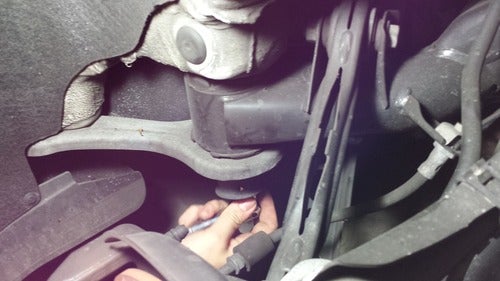
Of the available chassis bushings, the most notorious are the rear subframe bushings. There are four mounting points for the rear subframe to the chassis of the vehicle, with bushings in place for NVH control. On the plebian, non-///M cars of this era, the bushings used not only are a very soft rubber, but the design is one I have experience with on other chassisí and vehicles, the ďvoidedĒ design. Oh, how I loathe this concept, so very much.
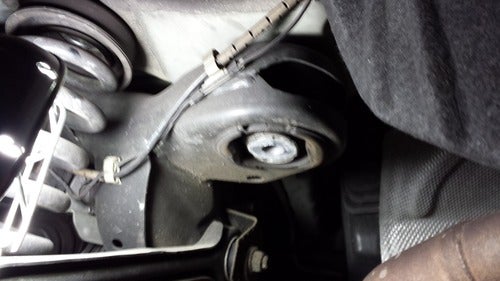
The bushings are designed in such a way that they are not solid rubber, but have voided areas inside the bushing, that allow for additional flex to dampen vibrations. Looking in the picture above, the large voided area between the subframe mounting bolt and the edges of the bushing are easily seen. That is how much side to side flex can occur before the subframe ďtakes a setĒ and movement is limited. Of course, oscillations and changes in pavement condition could cause back and forth movement, meaning that the subframe is never completely stationary. That is bad for predictability when you are never quite sure what the rear end is doing, and certainly quite an issue for a well-over-300-horsepower, RWD car, especially one with an open differential (!).
What are our options? Ideally, we would find a way to solidly mount the subframe to the chassis. Possible, certainly, but not within the budget to have a solution fabricated. We could replace the bushings with stiffer rubber, or even polyurethane units. For example, the 1M/M3 units are direct replacements, at around $300. That would require dropping the subframe for access and pressing out the old bushings. I donít have a press, and dropping rear subframe on a RWD is a messy job, so letís pass for the time being.
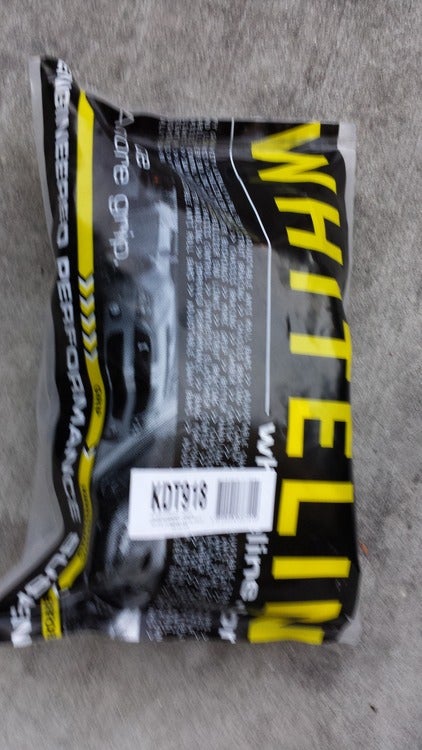
Enter Whiteline. A staple in the Subaru community, and branching out from there, this Australian brand has put forth multiple solutions for your E9X/E8X based platform. The less invasive, and much less expensive solution are their subframe bushing inserts (PN# KDT918). The premise of a bushing insert is to fill the void in the bushing with a stiff poly piece to limit bushing movement. At around $50, I hopped on it, going for the bang-for-the-buck solution.
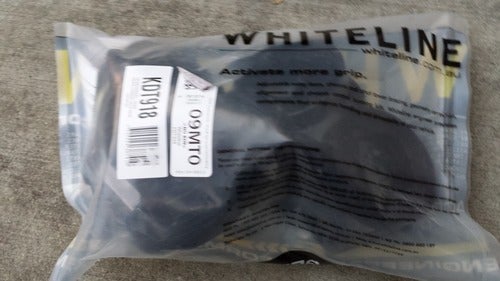
In previous applications, I have used bushing inserts with a marked degree of success. Additionally, this is the only real solution available that is easily done with hand tools with the car on jack stands.
There are four rear subframe mounting points on the car, and each mounting point receives an upper and lower insert. Undo the mounting bolt at each point, and leverage the subframe into submission just enough to stuff the insert into the void of the bushing, and refasten.
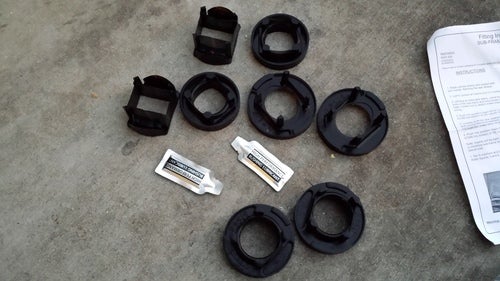
Of course, easier said than done, there are a few braces and links need to be removed give the subframe sufficient slack. In addition, getting the upper inserts lined up was quite a challenge. We were able to get the subframe dropped just enough to squeeze the insert between the chassis and the subframe, then it was a matter of fanagling the insert into the correct orientation, jamming it into the bushing, attempting to re-fasten the subframe, watch for movement, and reposition as necssary so the insert did not end up in binding position.
Hope you have your Torx, and E-sockets handy!
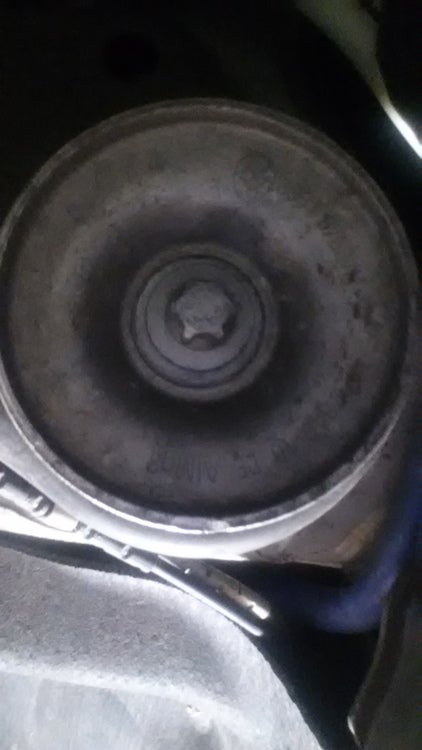
Oh yeah, grab a good 6Ē worth of extension as well for the front bushings. Donít be afraid to lean on them with a 1/2Ē breaker bar, those suckers are on there tight, just donít round off those finicky E-Socket fittings!
All done:
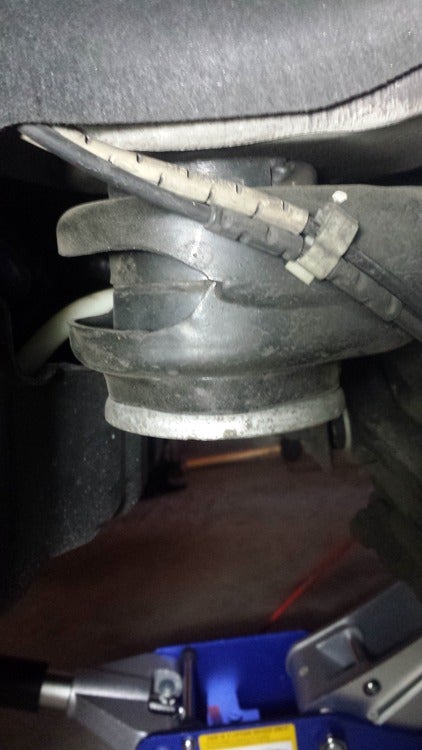
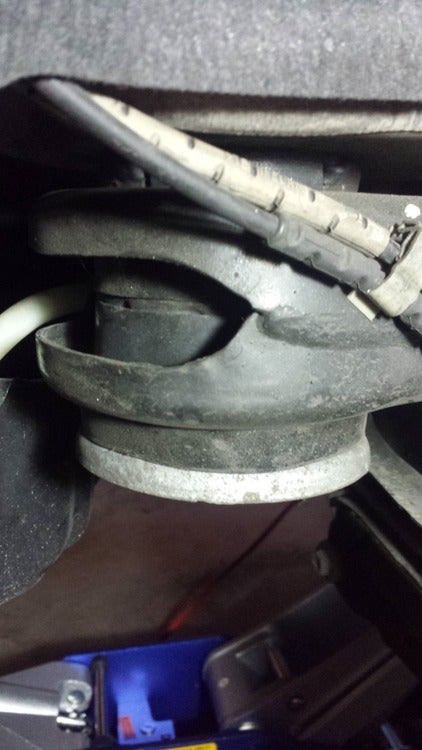
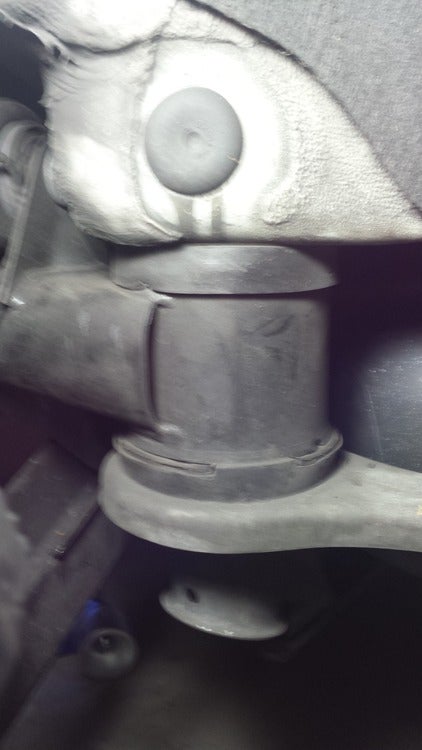
Having spoken with other people who have gone this route, I was skeptical of their claimed improvement in handling, consistency, and feeling that the rear axle was actually connected to the car.
My Impressions:
NVH (Noise, Vibration, and Harshness): No appreciable difference, as expected. If the front subframe can be solidly mounted with sufficient NVH characteristics, the rear subframe should also be able to go metal on metal and be fine. Think about it, the engine is mounted to the front subframe, and it is the NVH King, if that works okay, why would the rear, under much less stress, be any different?
Handling Characteristic: A mild improvement can be felt in terms of the rear end better communicating what it is doing. Then again, just about anything is an improvement over stock. There was no dramatic sensation of ďBeforeĒ and ďAfter,Ē and the differences can only be appreciated by Driver. Pavement oscillations, or uneven pavement is better felt through the rear end after having done this, presumably this means that the rear suspension is better communicating what is being experienced.
Using a very unofficial mech-a-neck test, the stock bushings could easily be deflected by hand, and moved to their full travel with a small amount of force applied by a screwdriver. That is soft. With the bushing inserts in place, the trusty screwdriver test showed minimal movement compared to stock. Take that for what its worth.
Cost versus Effectiveness: It cannot be denied that not only is this solution the cheapest in terms of parts prices, but also it is the least involving for installation, and easily handled by any Weekend Warrior with hand tools and jack stands. However, the hard-edged wannabe racer in me wishes for more. I may look into a more thorough revamp of the rear subframe/axle assembly in the future. For the time being, this is worthwhile simply due to the low price point.
Closing Comments: BMW dropped the ball in many ways when it came to the performance potential of the 135i. However, it is a laugh-and-a-half, in a charmingly simple way, so maybe throwing a bunch of money at it to at least make it competent would not be such a bad idea. Bang for the buck-wise, itís $50, and anything is an improvement over the stock design. Invest an hour or two of your time into this one, itís worth it .
 Bob Loblaw Made Me Make a Phoney Phone Call to Edward Rooney
> Jake Stumph Racing
Bob Loblaw Made Me Make a Phoney Phone Call to Edward Rooney
> Jake Stumph Racing
05/28/2015 at 12:04 |
|
I wholeheartedly disagree with the characterization of the 135i front-end as an NVH king. Mild bumps ahead send me swerving all over the road in an attempt to avoid them in mine.
 Jake Stumph Racing
> Bob Loblaw Made Me Make a Phoney Phone Call to Edward Rooney
Jake Stumph Racing
> Bob Loblaw Made Me Make a Phoney Phone Call to Edward Rooney
05/28/2015 at 12:50 |
|
Can you elaborate on what that means? The stock shocks on these cars are deplorable, and cause the car to crash around on the bump stops frequently. Shocks and bushings should be the first mods done to these cars if you care about ride quality, or handling at all.
As far as the ďNVHĒ characterization, the premise is that the engine of the vehicle will create more vibration than anything else in a car, yet despite the solidly mounted front subframe/engine cradle, NVH is not a concern there.
 Bob Loblaw Made Me Make a Phoney Phone Call to Edward Rooney
> Jake Stumph Racing
Bob Loblaw Made Me Make a Phoney Phone Call to Edward Rooney
> Jake Stumph Racing
05/28/2015 at 14:26 |
|
Ah, okay, I see it now. Yes, very little in the way of NVH comes through from the engine, and yes, the stock shocks are awful.
What shocks are you running? Iím reaching a bit of a bridge where Iím either going to sell the car or Iím going to make the decision to keep it as my daily for many more years, and if I do that Iím going to start addressing some of the issues I have with the car and the front-end push/ride quality is where Iíd like to start.
 Jake Stumph Racing
> Bob Loblaw Made Me Make a Phoney Phone Call to Edward Rooney
Jake Stumph Racing
> Bob Loblaw Made Me Make a Phoney Phone Call to Edward Rooney
05/28/2015 at 14:42 |
|
I have TC Kline coilovers which are Koni-based. For a DD, pick up some Koni Yellows and be a happy camper.
 Bob Loblaw Made Me Make a Phoney Phone Call to Edward Rooney
> Jake Stumph Racing
Bob Loblaw Made Me Make a Phoney Phone Call to Edward Rooney
> Jake Stumph Racing
05/28/2015 at 14:59 |
|
Those are what I had eyeballed out, browsed some forums a while back and they too had nothing but good things to say. Not badly priced either.
Do you have an opinion on the efficacy of the M3 front control arms? Worth doing or a bit overhyped?
 Jake Stumph Racing
> Bob Loblaw Made Me Make a Phoney Phone Call to Edward Rooney
Jake Stumph Racing
> Bob Loblaw Made Me Make a Phoney Phone Call to Edward Rooney
05/28/2015 at 15:21 |
|
Due to the class I run the car in, I can only have one camber changing element on the front axle, so I went with camber plates since they are a lot more effective for how I use the car. I donít doubt that the ///M control arms work as described, better angle of the arm, better bushings, etc. Probably helps liven up the already excellent steering.
 NYHoustonman
> Jake Stumph Racing
NYHoustonman
> Jake Stumph Racing
07/14/2015 at 12:55 |
|
Just found your archive - awesome stuff! Iíve been lucky enough to drive an Ď09 135i over the last three years. In that time, Iíve covered many of the usual modifications to the chassis (springs, dampers, bump stops and shock mounts, front sway bar (Dinan stage 3), Pilot Super Sports 225/255 on stock wheels), but I havenít tackled any of the bushings. Iím torn between (1) going the bushing replacement route or (2) sticking with what I have, which feels pretty good and worlds better than stock, and instead saving that money to put towards something better down the line.
Itís a potentially big commitment, and I hear good things, but I hear these things (mostly) from people whom I donít think are qualified to comment on something so subtle as this. With that in mind, Iíd appreciate your opinion! How important are the changes youíve felt in changing out the other suspension components, compared to those from the subframe bushing inserts?
 Jake Stumph Racing
> NYHoustonman
Jake Stumph Racing
> NYHoustonman
07/14/2015 at 13:38 |
|
I think it all works together. With the coilovers that are on the car, I now want to go back and install stiffer bushings into the rear subframe, replacing these inserts. Transfer of energy, with a stiffer springs/shocks, the softer subframe is more noticeable.